Abstract
We undertook an international survey of prenatally diagnosed 45,X/46,XY mosaicism to ascertain the phenotypic spectrum of this condition. Ninety-two cases were obtained by means of a questionnaire sent to over 730 cytogenetic laboratories. Seventy-six cases (75 males and 1 female) had physical examinations after delivery or termination of pregnancy. Among these, there were four significant genital anomalies: three hypospadias and one female with clitoromegaly. Gonadal histology was abnormal in three (27%) of 11 cases, all of whom had normal male external genitalia. Other anomalies were noted in five cases: one cystic hygroma in a male, two cardiac anomalies, one spina bifida with multiple other defects, and one intrauterine growth retardation. There was no relationship between the percent mosaicism and the presence or degree of abnormalities. We conclude that 95% of 45,X/46,XY fetuses will have normal male genitalia, although there will also be a significant risk (27%) for abnormal gonadal histology. Long-term follow-up studies of prenatally diagnosed cases of 45,X/46,XY mosaicism are needed to study, without ascertainment bias, stature, pubertal development, tumor risk, and fertility.
Full text
PDF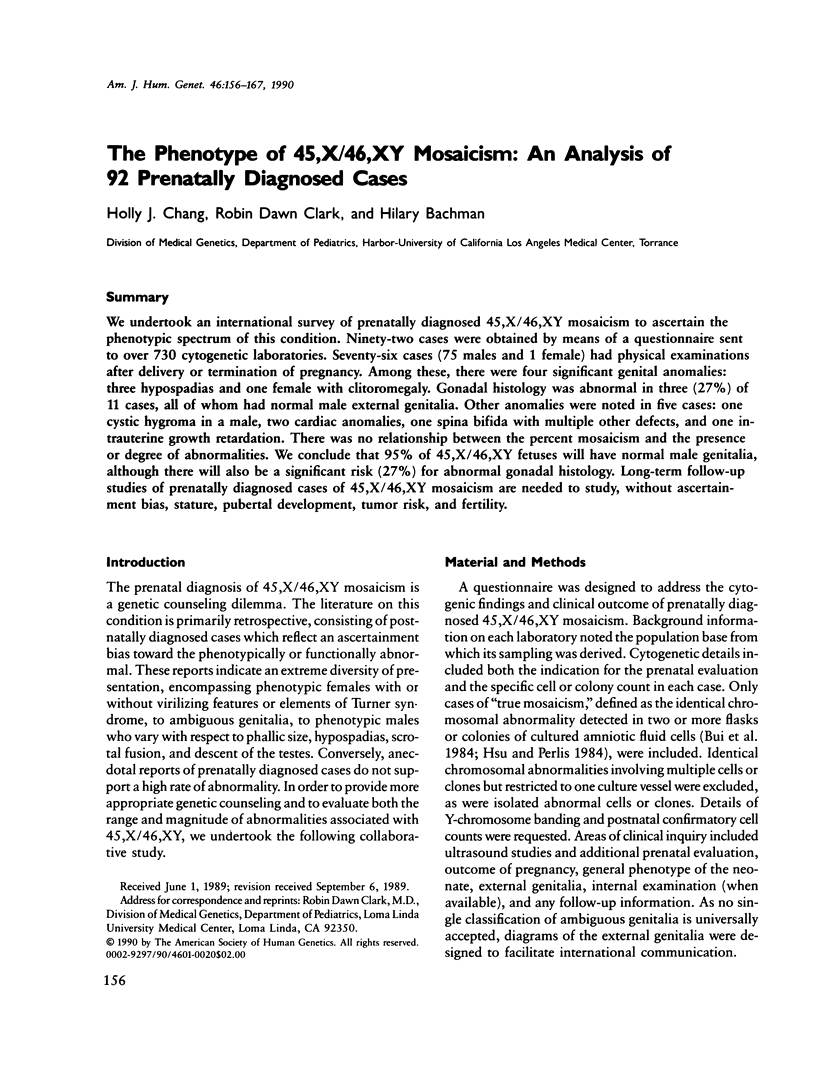
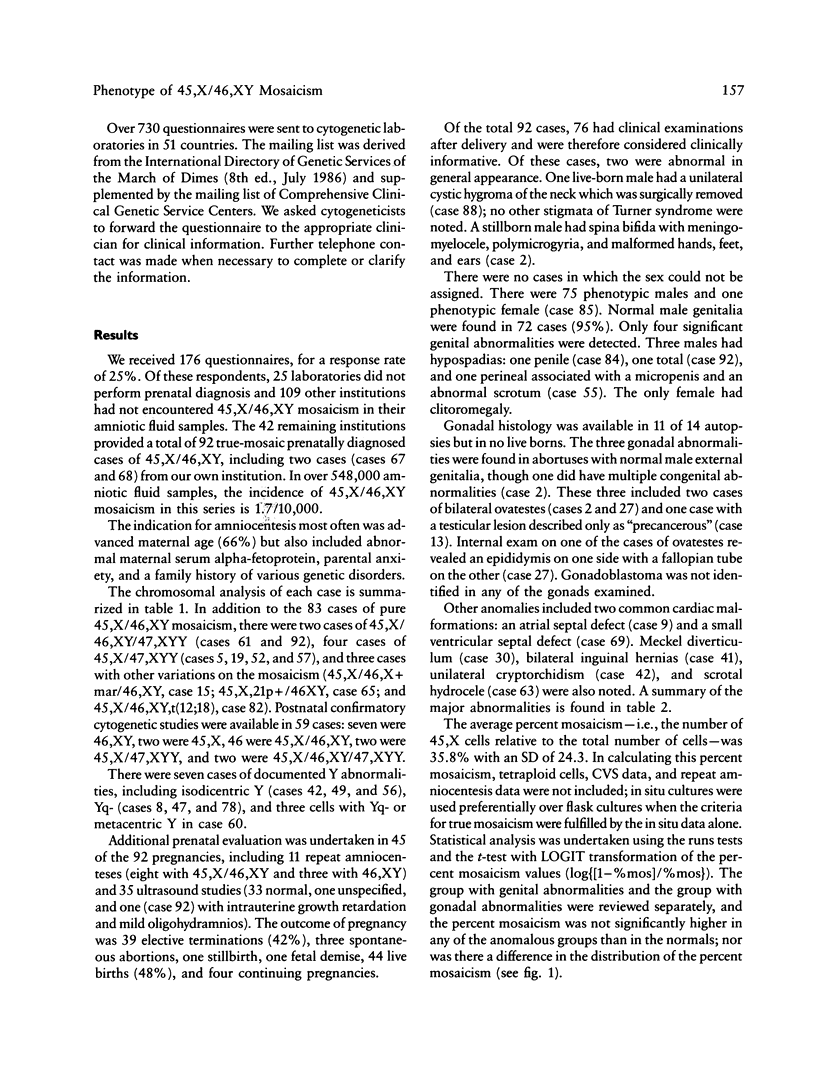
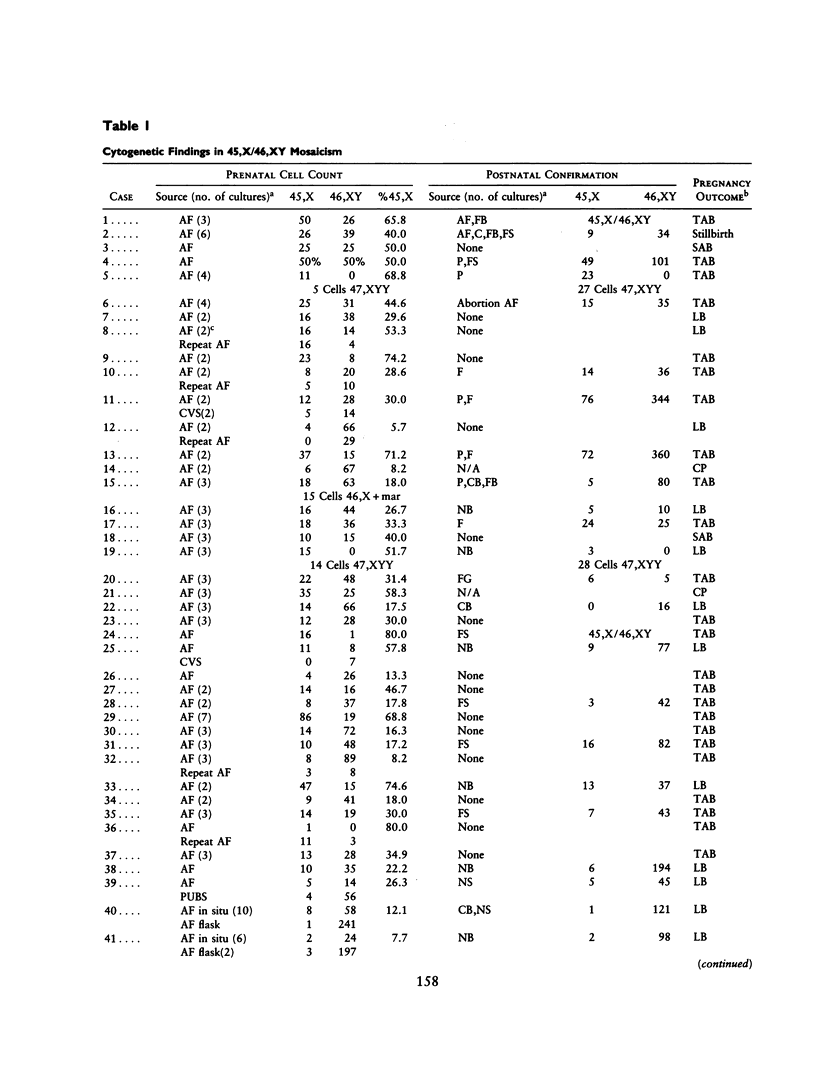
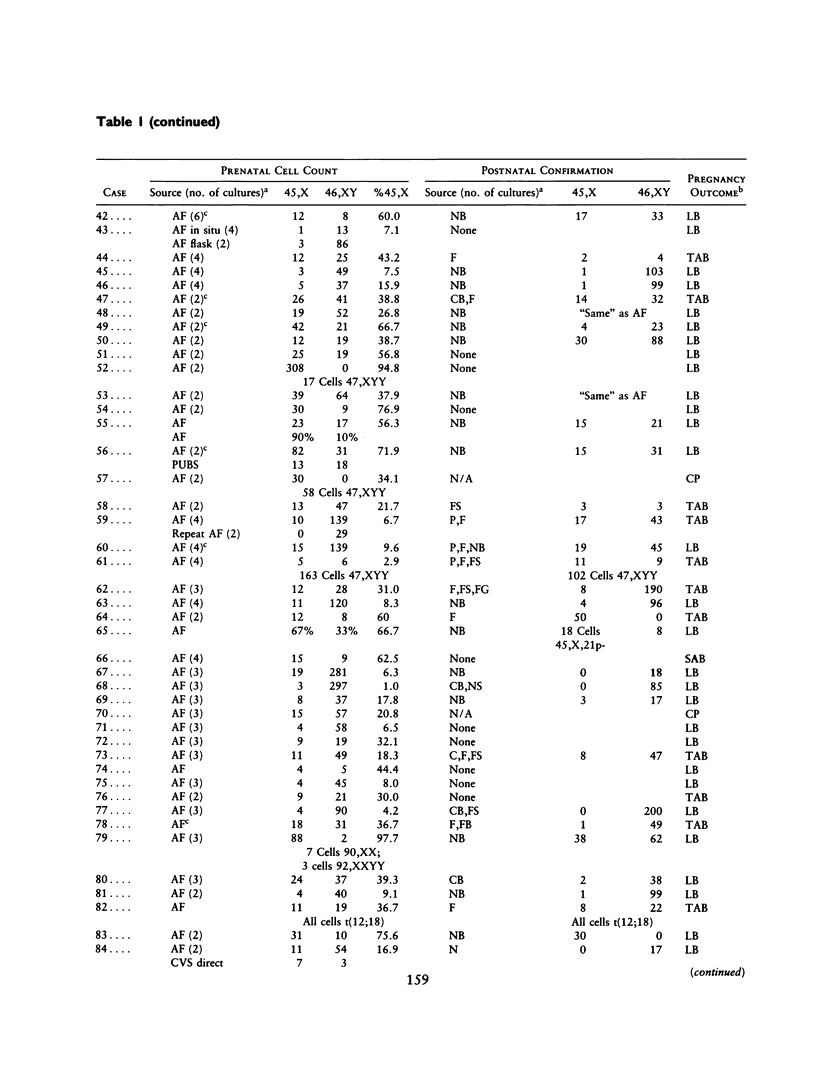
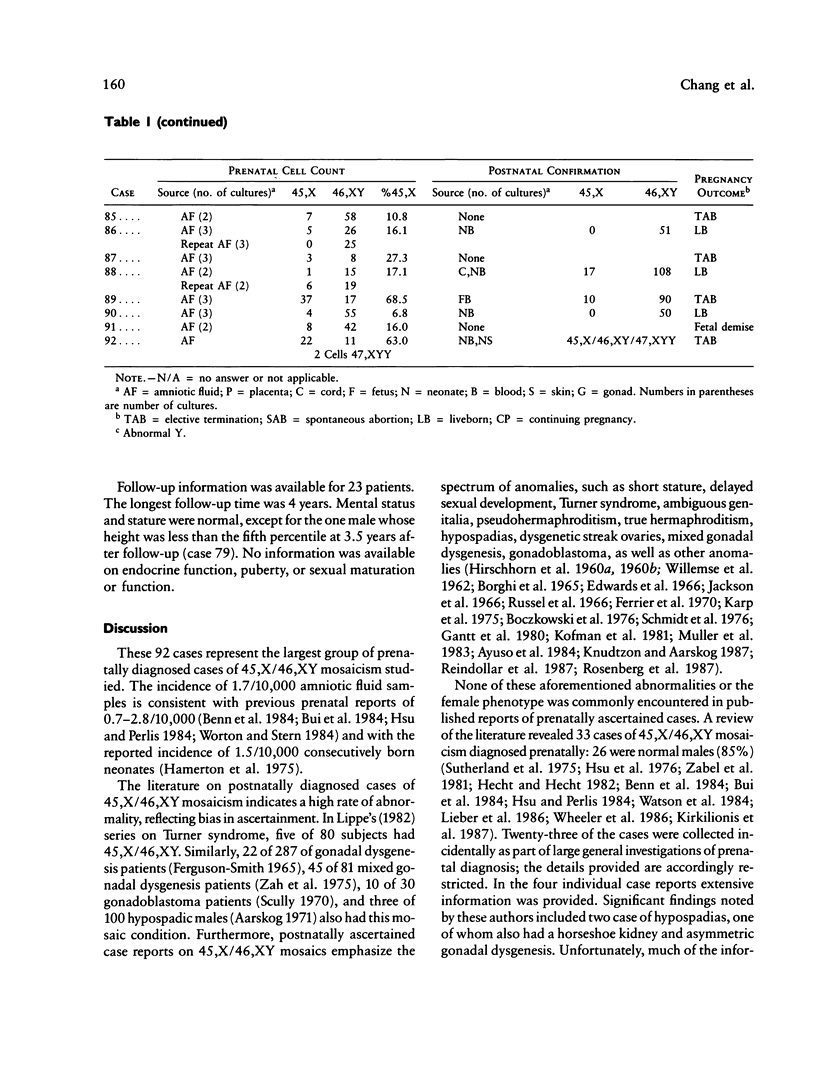
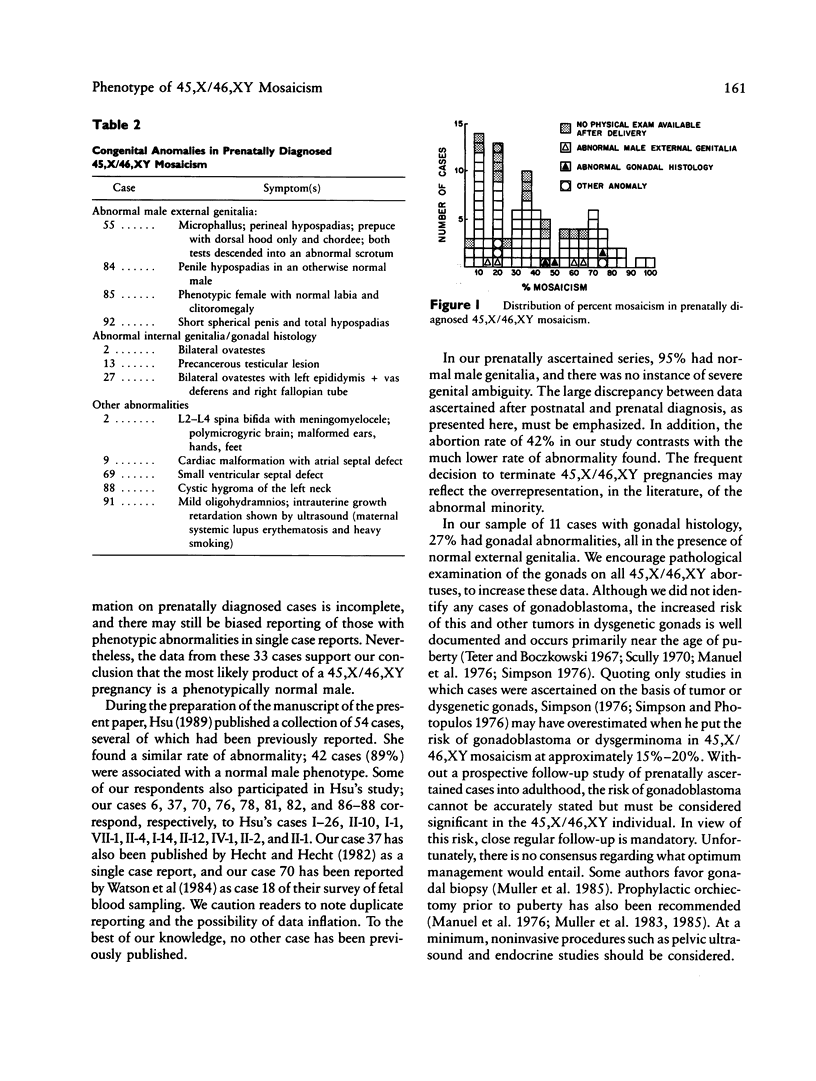
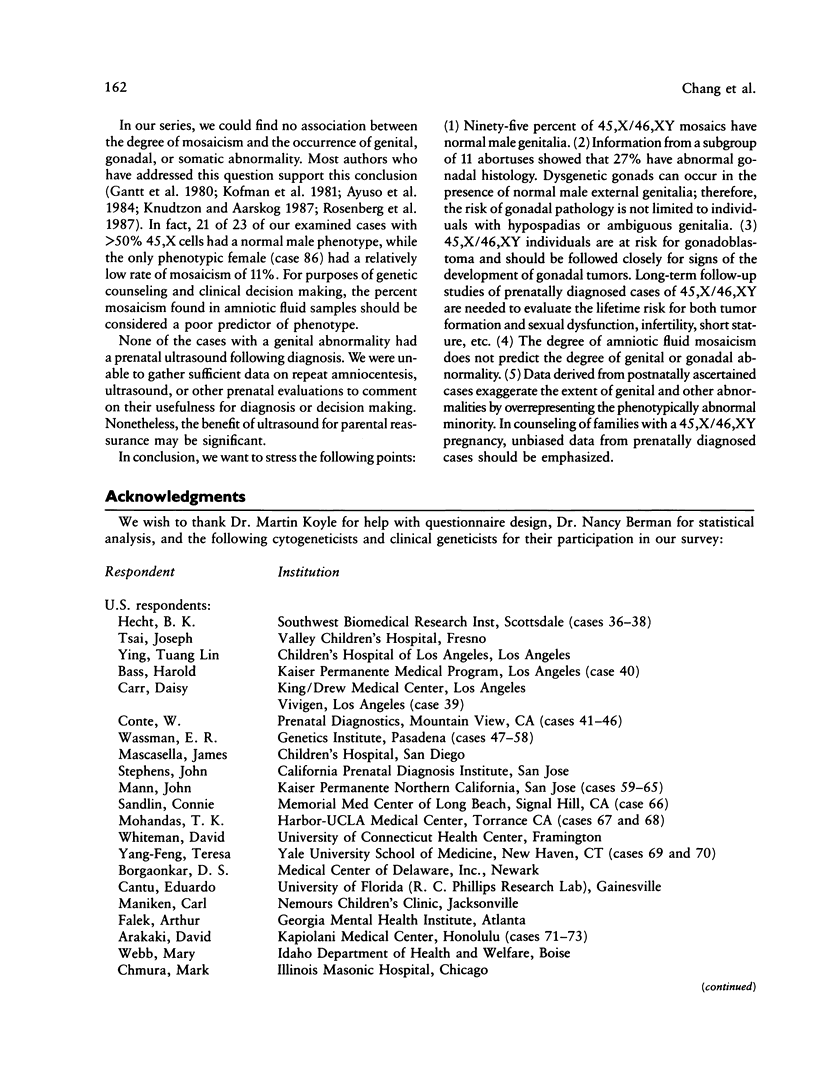
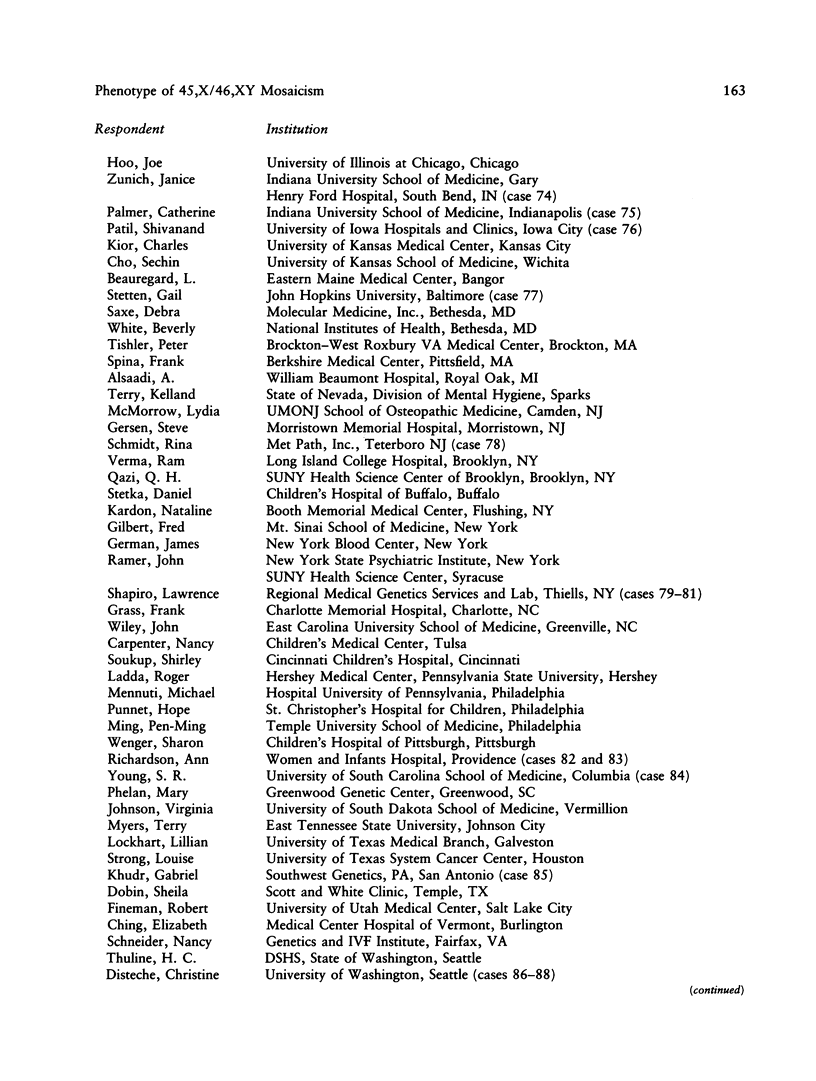
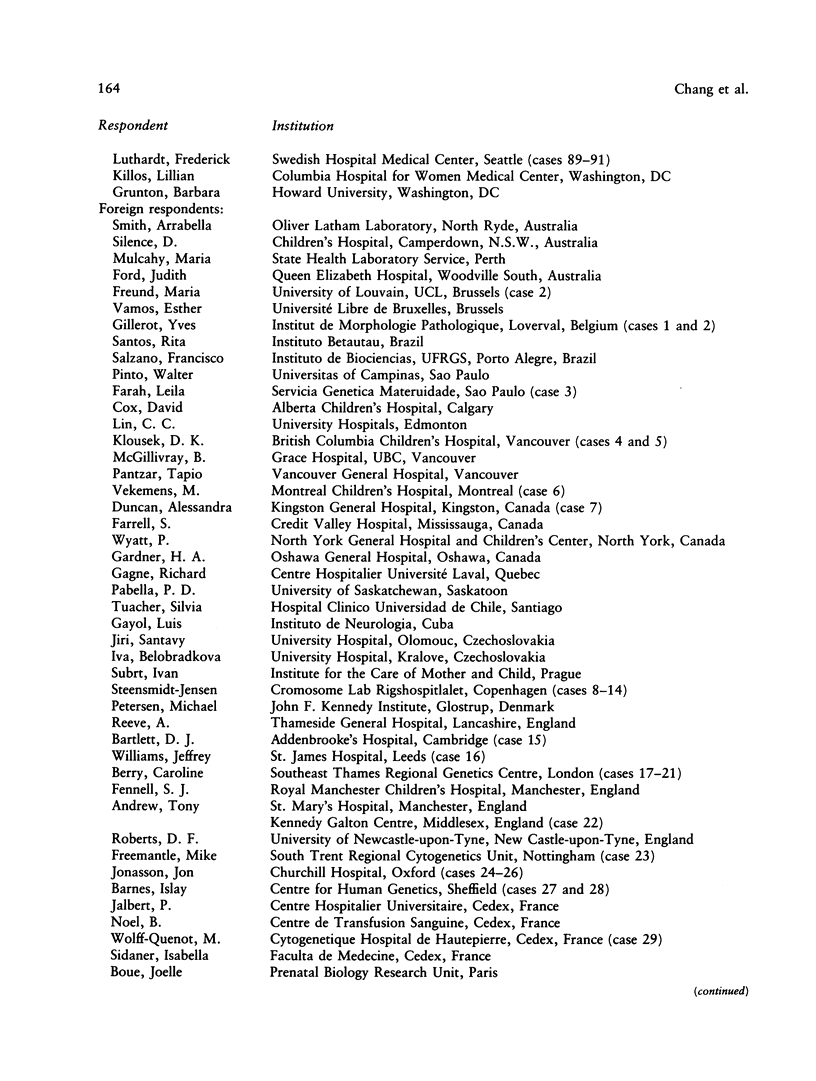
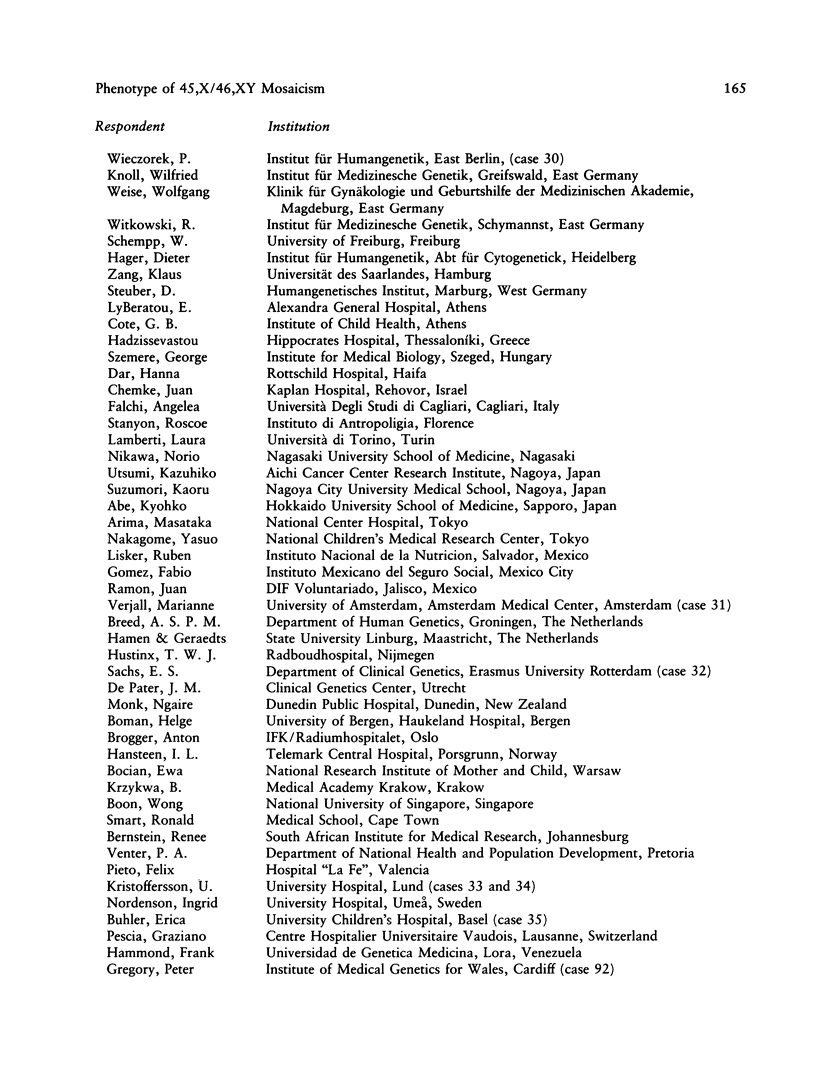
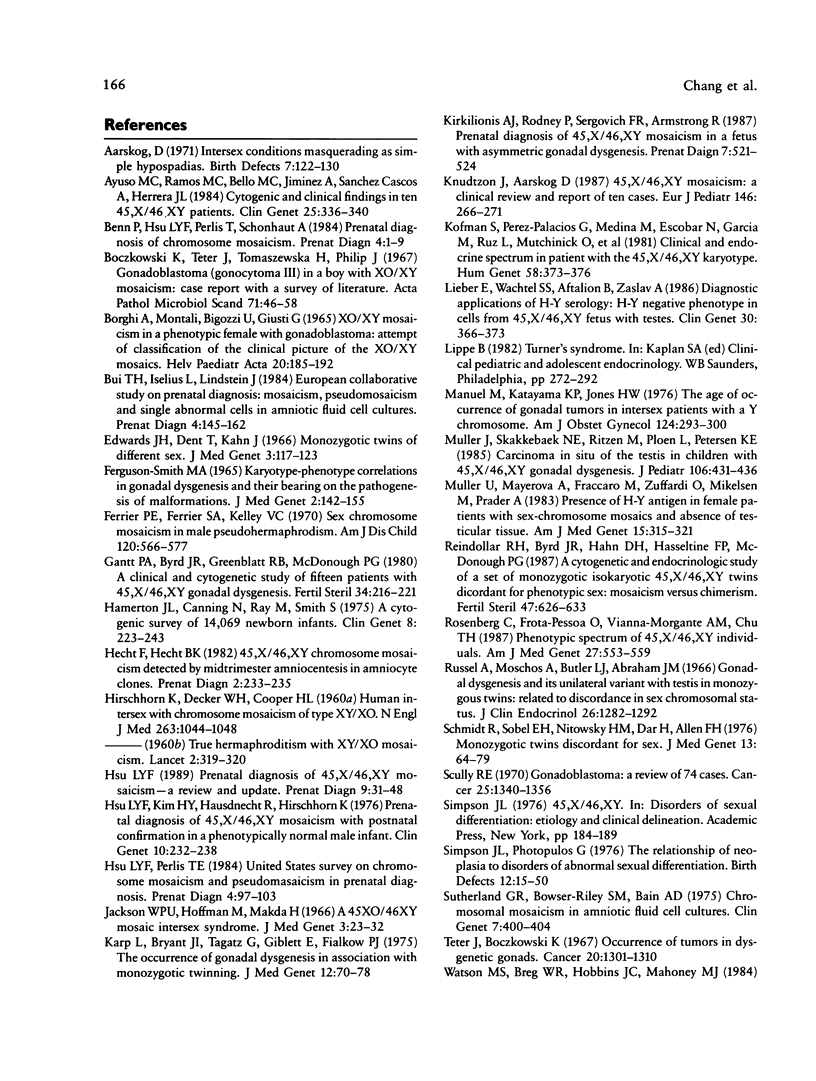
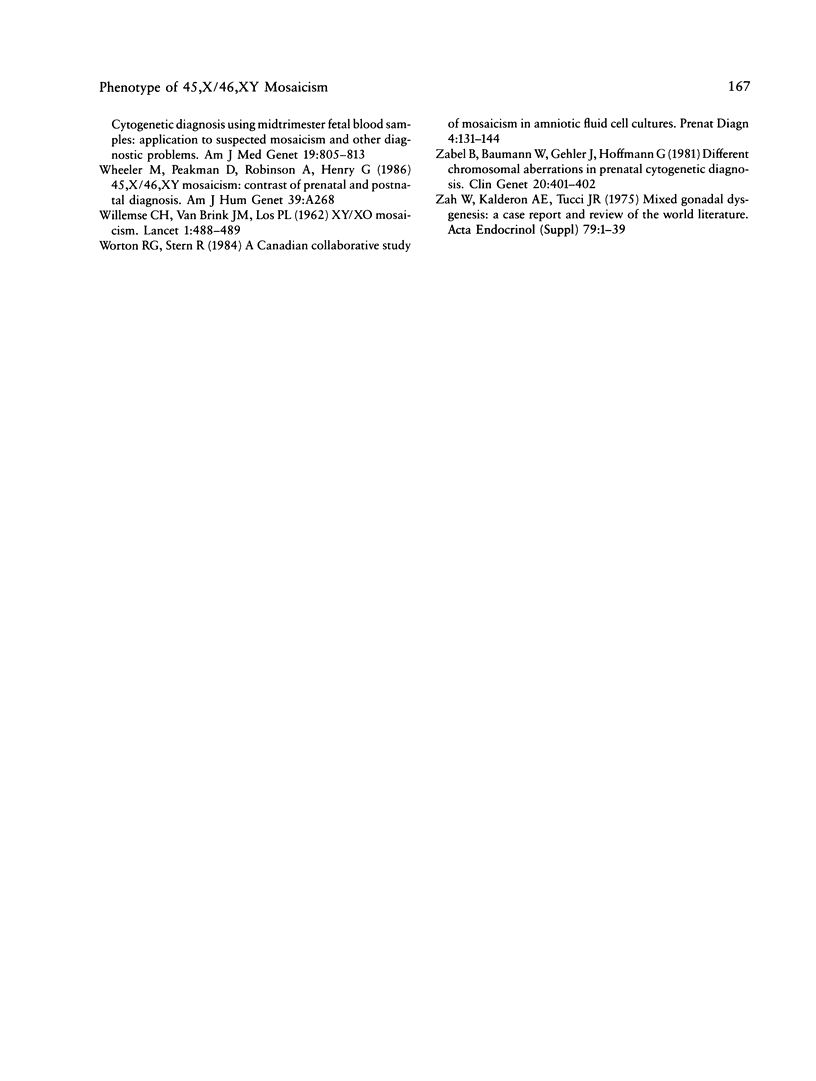
Selected References
These references are in PubMed. This may not be the complete list of references from this article.
- Aarskog D. Intersex conditions masquerading as simple hypospadias. Birth Defects Orig Artic Ser. 1971 May;7(6):122–130. [PubMed] [Google Scholar]
- Ayuso M. C., Ramos M. C., Bello M. C., Jimenez A., Sanchez Cascos A., Herrera J. L. Cytogenetic and clinical findings in ten 45,X/46,XY patients. Clin Genet. 1984 Apr;25(4):336–340. doi: 10.1111/j.1399-0004.1984.tb02000.x. [DOI] [PubMed] [Google Scholar]
- Benn P., Hsu L. Y., Perlis T., Schonhaut A. Prenatal diagnosis of chromosome mosaicism. Prenat Diagn. 1984 Jan-Feb;4(1):1–9. doi: 10.1002/pd.1970040102. [DOI] [PubMed] [Google Scholar]
- Borghi A., Montali E., Bigozzi U., Giusti G. XO-XY mosaicism in a phenotypic female with gonadoblastoma. Attempt of classification of the clinical picture of the XO-XY mosaics. Helv Paediatr Acta. 1965 Jun;20(2):185–192. [PubMed] [Google Scholar]
- Bui T. H., Iselius L., Lindsten J. European collaborative study on prenatal diagnosis: mosaicism, pseudomosaicism and single abnormal cells in amniotic fluid cell cultures. Prenat Diagn. 1984 Spring;4(Spec No):145–162. doi: 10.1002/pd.1970040710. [DOI] [PubMed] [Google Scholar]
- Edwards J. H., Dent T., Kahn J. Monozygotic twins of different sex. J Med Genet. 1966 Jun;3(2):117–123. doi: 10.1136/jmg.3.2.117. [DOI] [PMC free article] [PubMed] [Google Scholar]
- FERGUSON-SMITH M. A. KARYOTYPE-PHENOTYPE CORRELATIONS IN GONADAL DYSGENESIS AND THEIR BEARING ON THE PATHOGENESIS OF MALFORMATIONS. J Med Genet. 1965 Jun;2(2):142–155. doi: 10.1136/jmg.2.2.142. [DOI] [PMC free article] [PubMed] [Google Scholar]
- Ferrier P. E., Ferrier S. A., Kelley V. C. Sex chromoseme mosaicism in male pseudohermaphrodism. Am J Dis Child. 1970 Dec;120(6):566–567. doi: 10.1001/archpedi.1970.02100110114019. [DOI] [PubMed] [Google Scholar]
- Gantt P. A., Byrd J. R., Greenblatt R. B., McDonough P. G. A clinical and cytogenetic study of fifteen patients with 45,X/46XY gonadal dysgenesis. Fertil Steril. 1980 Sep;34(3):216–221. [PubMed] [Google Scholar]
- HIRSCHHORN K., DECKER W. H., COOPER H. L. Human intersex with chromosome mosaicism of type XY/XO. Report of a case. N Engl J Med. 1960 Nov 24;263:1044–1048. doi: 10.1056/NEJM196011242632102. [DOI] [PubMed] [Google Scholar]
- Hamerton J. L., Canning N., Ray M., Smith S. A cytogenetic survey of 14,069 newborn infants. I. Incidence of chromosome abnormalities. Clin Genet. 1975 Oct;8(4):223–243. doi: 10.1111/j.1399-0004.1975.tb01498.x. [DOI] [PubMed] [Google Scholar]
- Hecht F., Hecht B. K. 45,X/46,XY chromosome mosaicism detected by midtrimester amniocentesis in amniocyte clones. Prenat Diagn. 1982 Jul;2(3):233–235. doi: 10.1002/pd.1970020314. [DOI] [PubMed] [Google Scholar]
- Hsu L. Y., Kim H. J., Hausknecht R., Hirschhorn K. Prenatal diagnosis of 45,X/46,XY mosaicism with postnatal confirmation in a phenotypically normal male infant. Clin Genet. 1976 Oct;10(4):232–238. doi: 10.1111/j.1399-0004.1976.tb00040.x. [DOI] [PubMed] [Google Scholar]
- Hsu L. Y., Perlis T. E. United States survey on chromosome mosaicism and pseudomosaicism in prenatal diagnosis. Prenat Diagn. 1984 Spring;4(Spec No):97–130. doi: 10.1002/pd.1970040708. [DOI] [PubMed] [Google Scholar]
- Hsu L. Y. Prenatal diagnosis of 45,X/46,XY mosaicism--a review and update. Prenat Diagn. 1989 Jan;9(1):31–48. doi: 10.1002/pd.1970090106. [DOI] [PubMed] [Google Scholar]
- Jackson W. P., Hoffman M., Makda H. The 45XO/46XY mosaic intersex syndrome. J Med Genet. 1966 Mar;3(1):23–32. doi: 10.1136/jmg.3.1.23. [DOI] [PMC free article] [PubMed] [Google Scholar]
- Karp L., Bryant J. I., Tagatz G., Giblett E., Fialkow P. J. The occurrence of gonadal dysgenesis in association with monozygotic twinning. J Med Genet. 1975 Mar;12(1):70–78. doi: 10.1136/jmg.12.1.70. [DOI] [PMC free article] [PubMed] [Google Scholar]
- Kirkilionis A. J., Rodney P., Sergovich F. R., Armstrong R. Prenatal diagnosis of 45,X/46,XY mosaicism in a fetus with asymmetric gonadal dysgenesis. Prenat Diagn. 1987 Sep;7(7):521–524. doi: 10.1002/pd.1970070708. [DOI] [PubMed] [Google Scholar]
- Knudtzon J., Aarskog D. 45,X/46,XY mosaicism. A clinical review and report of ten cases. Eur J Pediatr. 1987 May;146(3):266–271. doi: 10.1007/BF00716471. [DOI] [PubMed] [Google Scholar]
- Kofman S., Pérez-Palacios G., Medina M., Escobar N., García M., Ruz L., Mutchinick O., Lisker R. Clinical and endocrine spectrum in patients with the 45,X/46,XY karyotype. Hum Genet. 1981;58(4):373–376. doi: 10.1007/BF00282818. [DOI] [PubMed] [Google Scholar]
- Lieber E., Wachtel S. S., Aftalion B., Zaslav A. L. Diagnostic applications of H-Y serology: H-Y negative phenotype in cells from 45,X/46,XY fetus with testes. Clin Genet. 1986 Nov;30(5):366–373. doi: 10.1111/j.1399-0004.1986.tb01893.x. [DOI] [PubMed] [Google Scholar]
- Manuel M., Katayama P. K., Jones H. W., Jr The age of occurrence of gonadal tumors in intersex patients with a Y chromosome. Am J Obstet Gynecol. 1976 Feb 1;124(3):293–300. doi: 10.1016/0002-9378(76)90160-5. [DOI] [PubMed] [Google Scholar]
- Müller J., Skakkebaek N. E., Ritzén M., Plöen L., Petersen K. E. Carcinoma in situ of the testis in children with 45,X/46,XY gonadal dysgenesis. J Pediatr. 1985 Mar;106(3):431–436. doi: 10.1016/s0022-3476(85)80670-3. [DOI] [PubMed] [Google Scholar]
- Müller U., Mayerova A., Fraccaro M., Zuffardi O., Mikkelsen M., Prader A. Presence of H-Y antigen in female patients with sex-chromosome mosaics and absence of testicular tissue. Am J Med Genet. 1983 Jun;15(2):315–321. doi: 10.1002/ajmg.1320150215. [DOI] [PubMed] [Google Scholar]
- Reindollar R. H., Byrd J. R., Hahn D. H., Haseltine F. P., McDonough P. G. A cytogenetic and endocrinologic study of a set of monozygotic isokaryotic 45,X/46,XY twins discordant for phenotypic sex: mosaicism versus chimerism. Fertil Steril. 1987 Apr;47(4):626–633. doi: 10.1016/s0015-0282(16)59113-4. [DOI] [PubMed] [Google Scholar]
- Rosenberg C., Frota-Pessoa O., Vianna-Morgante A. M., Chu T. H. Phenotypic spectrum of 45,X/46,XY individuals. Am J Med Genet. 1987 Jul;27(3):553–559. doi: 10.1002/ajmg.1320270308. [DOI] [PubMed] [Google Scholar]
- Russell A., Moschos A., Butler L. J., Abraham J. M. Gonadal dysgenesis and its unilateral variant with testis in monozygous twins: related to discordance in sex chromosomal status. J Clin Endocrinol Metab. 1966 Dec;26(12):1282–1292. doi: 10.1210/jcem-26-12-1282. [DOI] [PubMed] [Google Scholar]
- Schmidt R., Sobel E. H., Nitowsky H. M., Dar H., Allen F. H., Jr Monozygotic twins discordant for sex. J Med Genet. 1976 Feb;13(1):64–68. doi: 10.1136/jmg.13.1.64. [DOI] [PMC free article] [PubMed] [Google Scholar]
- Scully R. E. Gonadoblastoma. A review of 74 cases. Cancer. 1970 Jun;25(6):1340–1356. doi: 10.1002/1097-0142(197006)25:6<1340::aid-cncr2820250612>3.0.co;2-n. [DOI] [PubMed] [Google Scholar]
- Simpson J. L., Photopulos G. The relationship of neoplasia to disorders of abnormal sexual differentiation. Birth Defects Orig Artic Ser. 1976;12(1):15–50. [PubMed] [Google Scholar]
- Sutherland G. R., Bowser-Riley S. M., Bain A. D. Chromosomal mosaicism in amniotic fluid cell cultures. Clin Genet. 1975 May-Jun;7(5):400–404. doi: 10.1111/j.1399-0004.1975.tb00348.x. [DOI] [PubMed] [Google Scholar]
- Teter J., Boczkowski K. Occurrence of tumors in dysgenetic gonads. Cancer. 1967 Aug;20(8):1301–1310. doi: 10.1002/1097-0142(196708)20:8<1301::aid-cncr2820200814>3.0.co;2-4. [DOI] [PubMed] [Google Scholar]
- Watson M. S., Breg W. R., Hobbins J. C., Mahoney M. J. Cytogenetic diagnosis using midtrimester fetal blood samples: application to suspected mosaicism and other diagnostic problems. Am J Med Genet. 1984 Dec;19(4):805–813. doi: 10.1002/ajmg.1320190422. [DOI] [PubMed] [Google Scholar]
- Worton R. G., Stern R. A Canadian collaborative study of mosaicism in amniotic fluid cell cultures. Prenat Diagn. 1984 Spring;4(Spec No):131–144. doi: 10.1002/pd.1970040709. [DOI] [PubMed] [Google Scholar]
- Zäh W., Kalderon A. E., Tucci J. R. Mixed gonadal dysgenesis. Acta Endocrinol Suppl (Copenh) 1975;197:1–39. [PubMed] [Google Scholar]


